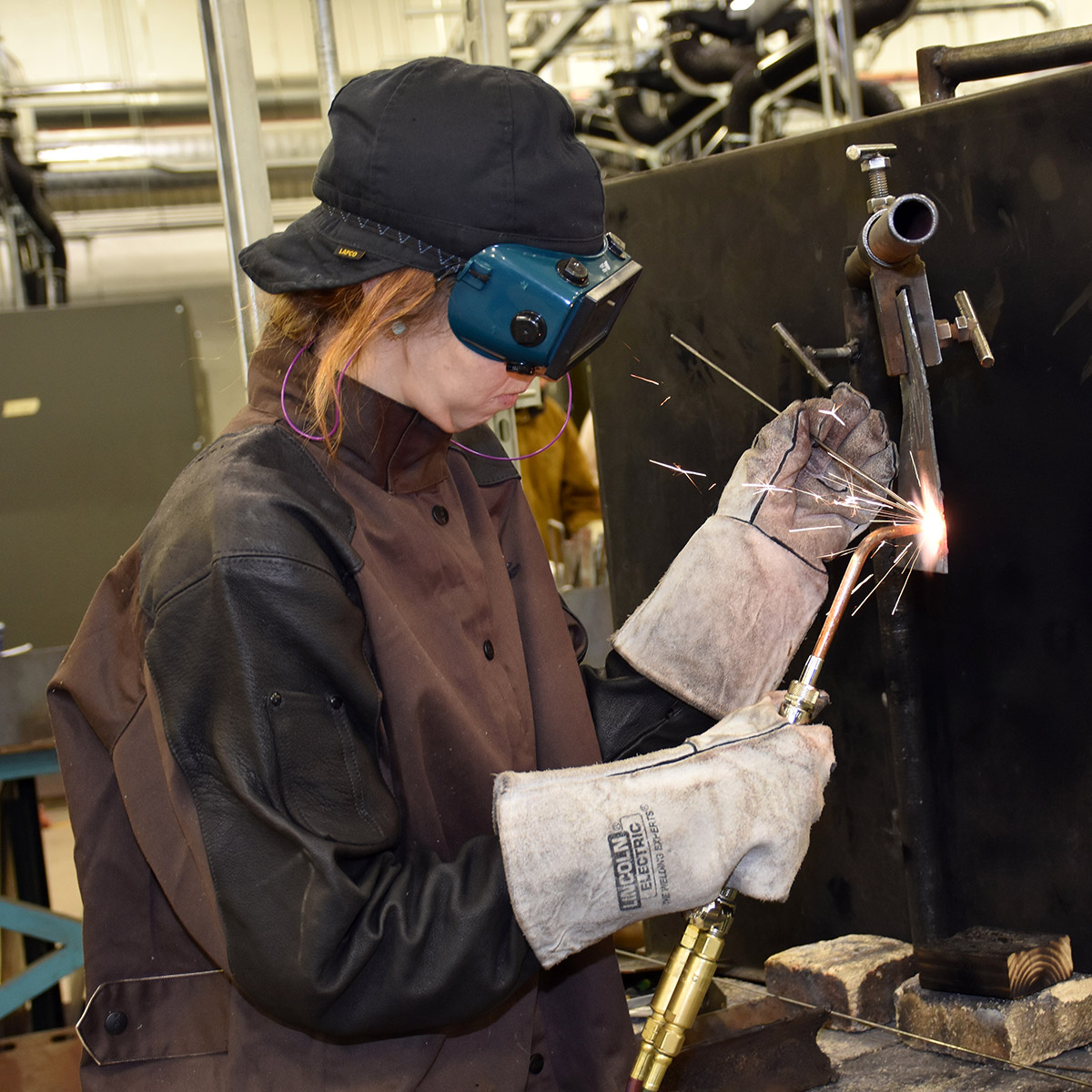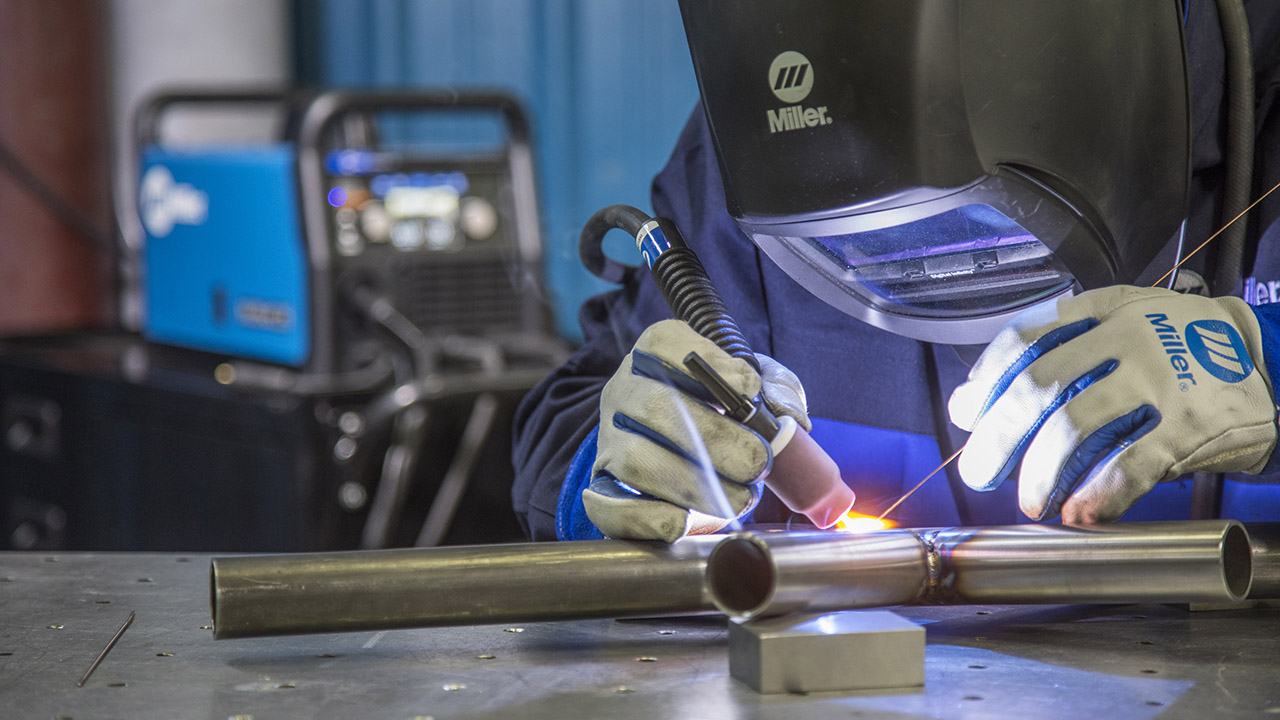Everything about Welding: Key Insights Into Techniques and Best Practices for Success
Welding encompasses a range of techniques, each matched for details products and applications. Comprehending these approaches, such as GMAW, SMAW, and TIG, is crucial for achieving excellent results. The appropriate devices and safety and security techniques can not be forgotten. As preparation and troubleshooting play important duties in the welding procedure, grasping these elements can considerably boost the top quality of the last product. What are the key aspects that ensure a successful weld?
Understanding Various Welding Strategies
Welding methods encompass a variety of approaches, each fit to particular applications and materials. Among the most common techniques are Gas Metal Arc Welding (GMAW), Protected Steel Arc Welding (SMAW), and Tungsten Inert Gas Welding (TIG) GMAW, additionally recognized as MIG welding, is popular for its speed and convenience, making it optimal for thin materials. SMAW, or stick welding, is preferred for its simplicity and effectiveness in outside environments, especially with thicker metals. TIG welding uses accuracy and control, making it appropriate for intricate work and non-ferrous metals (Montana Mobile Welding and Repair). Each strategy has its distinct benefits and factors to consider, enabling welders to choose the very best method based upon the project's requirements, material kind, and wanted end results. Comprehending these techniques is crucial for successful welding
Necessary Welding Tools and Tools
While different welding techniques need specific abilities, the right devices and devices are similarly crucial for accomplishing quality results. Necessary welding devices consists of welding devices, which vary depending on the method-- such as MIG, TIG, or stick welding. Protective gear, consisting of handwear covers, helmets, and aprons, assurances safety and security and comfort during the process. On top of that, components and clamps aid secure materials in position, guaranteeing precision in welds. Consumables like welding poles, wire, and securing gas are also critical elements that affect the quality of the weld. Devices such as grinders and cutters help with surface prep work and post-weld ending up, adding to an expert outcome. Purchasing premium equipment eventually improves the effectiveness and effectiveness of welding jobs.
Security Practices in Welding
Correct security techniques are essential in the welding market to shield workers from possible hazards. Welders need to use ideal personal safety devices (PPE), including headgears with appropriate shading, gloves, and flame-resistant garments. Appropriate ventilation is vital to decrease exposure to harmful fumes and gases produced during the welding procedure. Additionally, employees need to be educated in the appropriate handling of welding devices to stop crashes. Fire safety and security steps, such as keeping flammable materials away from the welding location and having fire extinguishers readily available, are required. Normal examinations of devices and offices can help determine possible dangers prior to they result in accidents. By adhering to these safety and security techniques, welders can develop a safer working environment and minimize dangers connected with their trade.
Preparing Products for Welding
Preparing products for welding is an essential step that considerably affects the top quality and stability of the last item (Montana Mobile Welding and Repair Belgrade). Proper prep work includes cleansing the surfaces to eliminate pollutants such as dirt, oil, and rust, which can jeopardize the weld. Strategies such as grinding, fining sand, or utilizing solvents are frequently used to attain a clean surface. Furthermore, guaranteeing that the materials fit with each other well is crucial; voids can result in weak welds. It's also crucial to consider the alignment and positioning of the parts, as this will certainly impact the ease of welding and the last outcome. Choosing the proper filler material and guaranteeing compatibility with the base steels is essential for accomplishing solid, durable welds.
Tips for Getting High-Quality Welds
Accomplishing high-quality welds needs attention to information and adherence to ideal techniques throughout the welding procedure. Correct joint prep work is crucial, guaranteeing surfaces are complimentary and tidy from contaminants. Selecting the proper filler product and welding technique based on the base steels is crucial for perfect bonding. Keeping regular travel rate and angle while welding can prevent issues and promote uniformity. Furthermore, regulating warmth input is crucial; too much heat can bring about warping and deteriorated joints. If essential, on a regular basis evaluating the welds throughout the procedure enables for instant changes. Lastly, using suitable post-weld therapies, such as cleaning and stress and anxiety alleviation, can improve the toughness and integrity of the weld, inevitably guaranteeing a successful end result.
Troubleshooting Common Welding Issues
Welding usually provides obstacles that can influence the top quality and honesty of the final item. Typical concerns such as porosity, inconsistent weld beads, and overheating can arise, each requiring specific repairing techniques. Comprehending these issues is essential for welders to enhance their skills and accomplish ideal results.
Porosity Issues Clarified
Porosity can typically be overlooked, it continues to be an essential problem in welding that can jeopardize the stability of a water welding completed product. Porosity describes the existence of small gas pockets within the weld bead, which can compromise the joint and lead to premature failing. This issue commonly occurs from contaminants, moisture, or inappropriate securing gas coverage during the welding procedure. To mitigate porosity, welders must validate that the base products are dry and clean, use suitable securing gases, and preserve consistent welding criteria. Routinely examining the equipment and setting can likewise aid identify prospective problems before they manifest in the weld. Resolving porosity successfully is important for accomplishing strong, long lasting welds that satisfy top quality criteria.

Inconsistent Weld Beans
Irregular weld grains can greatly affect the high quality and toughness of an ended up product. Various aspects add to this concern, consisting of incorrect travel rate, wrong amperage setups, and irregular electrode angles. When the welder moves as well swiftly, a grain may show up slim and lack infiltration, while relocating also slowly can create extreme accumulation. Furthermore, using the wrong amperage can lead to either damaging or too much spatter, both of which concession weld integrity. The welder's strategy, such as inconsistent lantern movement, can also cause irregular bead look. To alleviate these problems, welders should focus on keeping constant, regulated movements and making certain proper equipment setups to accomplish harmony in their welds. Consistency is vital to achieving trustworthy and solid welds.
Getting Too Hot and Bending Issues
Too much warm throughout the welding process can bring about significant overheating and contorting problems, affecting the architectural stability of the workpiece. These issues commonly show up as distortion, which can compromise positioning and fit-up, making further setting up challenging. Aspects adding to overheating include the choice of welding parameters, such as voltage and take a trip speed, in addition to the kind of material being bonded. To mitigate these issues, welders need to maintain constant travel speed and suitable heat input while monitoring the workpiece temperature level. In addition, pre-heating or post-weld heat therapy can help reduce tensions brought on by quick cooling - Montana Mobile Welding and Repair. Normal inspection and adherence to ideal practices are necessary in stopping overheating and making certain the long life and integrity of welded frameworks
Often Asked Questions
What Are the Job Opportunities in the Welding Market?
The welding market provides varied job chances, consisting of placements as welders, designers, inspectors, and educators. Experts can operate in manufacturing, building, aerospace, and automotive sectors, benefiting from strong need and affordable wages in various duties.
Exactly How Can I Boost My Welding Speed Without Giving Up High Quality?
To boost welding speed without compromising top quality, one must practice reliable methods, maintain tools, maximize settings, and boost hand-eye sychronisation. Routine training and looking for feedback can also significantly add to achieving faster, high-quality welds.
What Qualifications Are Readily Available for Welders?
Various certifications exist for welders, including those from the American Welding Society (AWS), the National Center for Building And Construction Education and Study (NCCER), and various industry-specific organizations. These credentials boost employability and show ability best stick welder for beginners efficiency.
How Does Welding Affect the Residences of Metals?
Welding affects the properties of metals by modifying their microstructure, which can lead to changes in ductility, hardness, and toughness. Heat input and cooling rates during the process significantly influence these material attributes.
Can I Weld Dissimilar Metals Together?

Comments on “Fixing cracking in welded joints: tips from Montana Mobile Welding and Repair Fabrication”